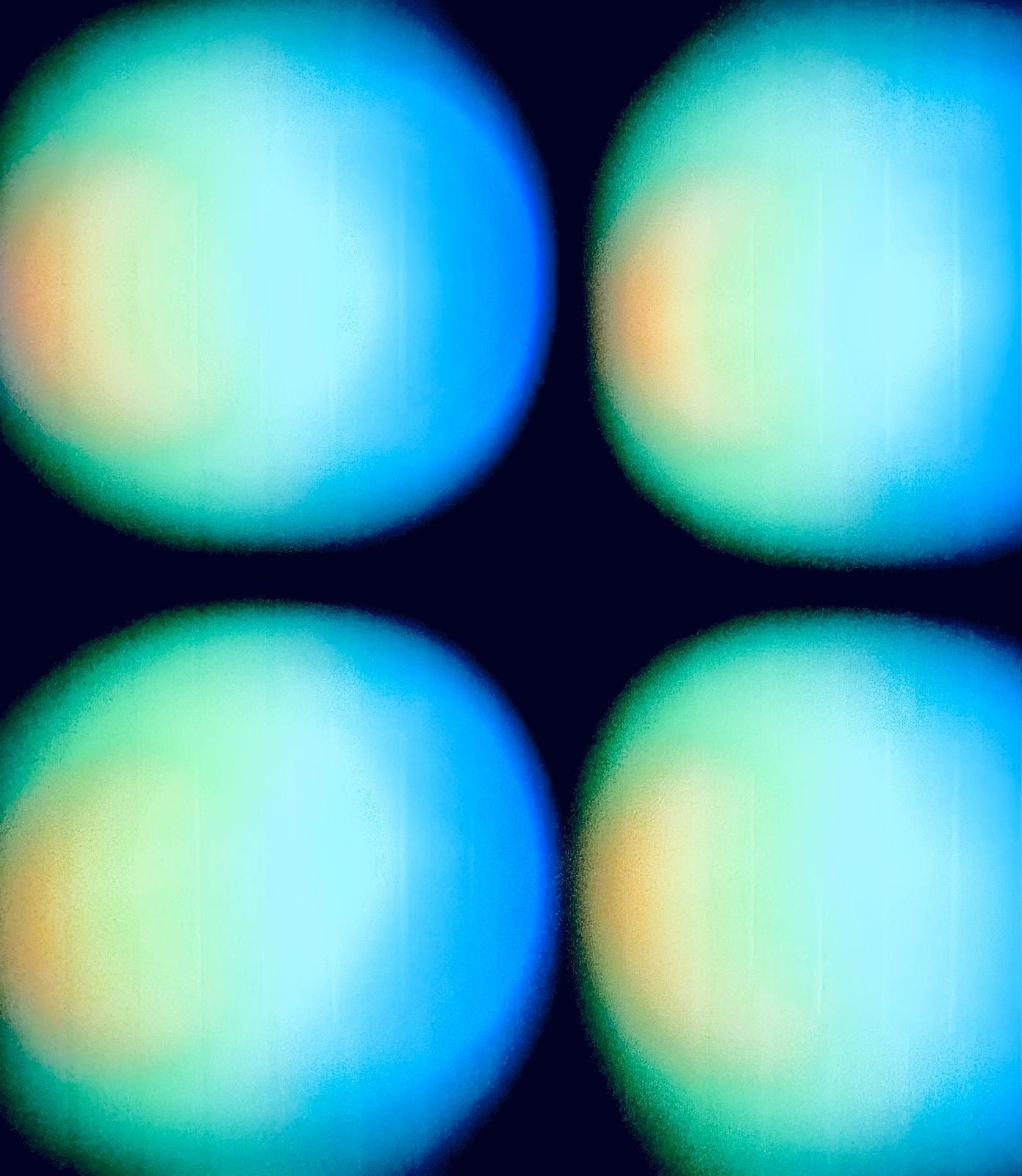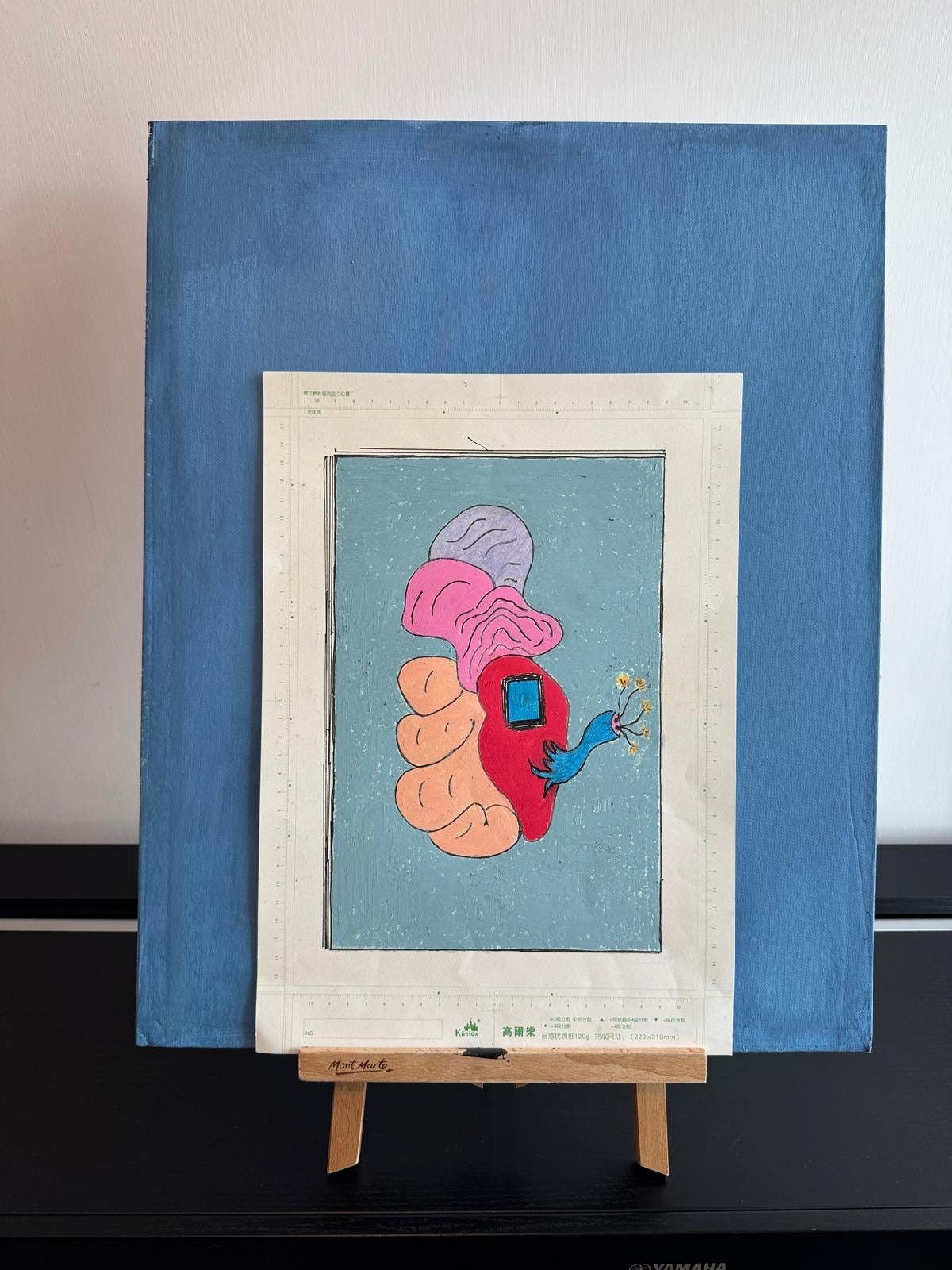The Somatic Machine
The title of an artwork is sometimes its justification.
The visual field may contain objects or an object sense that does not connect with intellectual attempts to understand it. The viewer needs a waypoint and a guidance system. The language of the title of the artwork becomes the target. This speaks to a fundamental frustration and quirk of art – it is a refuge for non-language sense, but that refuge drives an excitement or an impulse to express it, to define the feeling and the object that causes the feeling. In a way, the title of an artwork is a life preserver and its a safety seal.
In this case, I chose “The Somatic Machine” as the title of this piece. It is an attempt to describe something in the mind that is actually “of the body” that is not with language, but that is driven by the mind’s attempt to arrest it, capture it, or belong to it. Therefore, because this impulse seems both slightly unnatural and also insistent and persistent, I think of it as a corporeal machine. Or like a computing system.
Approaching Art
Whether the attempt to understand art, witness art or make art is driven by feeling or by language is hard to say. Where does the mind impulse begin and where does the language impulse begin? We do not know exactly if sense creates a need for language or if language creates a sense that language is suitable and necessary.
I suppose you could say an infant learning to speak NEEDS language, but they are also able to have their own experience without language and do just fine, albeit with all of their needs taken care of. Language, in any case, is still an acquisition. It has to come from outside.
I think in this way, art too comes from outside, even if it is generated by something internal.
There is something in the visual that seems to stand apart from everyday lived experience. The creation of something visual delivers with it an aura that asks us to scrutinise it, as if we were wild animals sniffing or sensing a new object or animal that has encroached upon our territory and, as a result, our instincts. While it may have been inspired by the natural world, it is derived by something manifested internally that cannot be known by anyone other than the person making the art. In this way, the art object is manifestly a strange object. It is something that at once anticipates language and at the same time casts it off. As Jaques Derrida pointed out, attempts to use language to explain reality inevitably are half-finished. There are many narratives that spiral outward and lead nowhere, and nothing in language sticks.
That drives our appreciation of art. Here is this thing wholly made without language, not needing language, at least superficially, and yet, we desire to understand it. Are we understanding IT, or are we understanding our own sense of language and the way it tries to acquire understanding of this visual IT?
The subject of this painting is that same primal instinct – that primal question – and the intellectual framework for it. This is a painting about a captive animal, the intellect, formed in features that are created for it by the imagination, and, imagination’s cause, our language.
However, being a thing without language, there is no language inherent in the object. This is the secondary subject of the painting.
So, to break it down:
This is a visual object that represents the primitive instinct of the mind and the way that this tactile delivery of the senses to the mind is both of the mind and of another thing, a language, which cannot be rendered in visual form.
This is a painting about the inability of language to capture and to represent something that was inherent before there was language, and that has not left human consciousness even as language has evolved to serve as a tool for separating the mind from the body; separating the individual from the society; separating human from nature
I call this primitive instinct the “Somatic Machine,” which is not the mind itself, and does not render the mind visible. It is simply the “drive” that enables various objecthoods to represent a thing that is visible only when the mind is rendering its senses into something that in turn can be translated into language.
I am not representing this “thing” in the painting. I am crafting an experience that enables the viewer to think about this thing.
Form, Figure or Activity?
Paintings do not exist to represent reality as we commonly see it, or as we pretend to commonly see it.
For me, a painting is not a representation. It is an experience.
There is no justification for following a set of representational rules that are less about art and aesthetic sense and more about classification and social hierarchy.
Since the days of the 17th Century Salons in Paris, rules and figurative drawing / figurative painting guidelines have been used as a kind of arbitrary credential system that enables the dilettantes and the critics to separate their wheats from their chaff. This serves as a justification for everything from favours and favouritism, to payments, value, pricing and pricelessness.
For example, I do not put shading or shadows in this painting for the reason that I do not want to create layers of cognitive dissonance. It’s obviously not meant to represent something in a fashion that would enable you to see that thing if you saw that thing in ‘reality.’ It’s more of an attempt to bring into visual and almost tactile form a reference point for something the mind does. It represents action if it represents anything at all — the nervous action; the sympathetic system’s action; the consciousness’ action; the delivery of the thoughts or ideas or waveforms of whatever has always existed and finds its touch points and engendering formation within the consciousness of the private viewer’s mind.
Thus, the visual object has nothing to do with fitting-to-form into this kind of system of Salon-great-narratives or figures of romantic sensibility or even postmodern or modernist attempts at abstract art.
Rather it is something that one can explore on one’s own in the safety of one’s own system, or within the system one has chosen to feel comfortable in, while one admires or interrogates art.
One might say of the art that: “It is a travel pass, not out of any one system or anyone’s system, but a travel pass to any “other” system that did not make the painting. In other words, I turn the script around and in an almost molecular or biological way, I invite the painting to be its own travel pass that passes through the customs agent of the ego or the conscious mind of a viewer into something deeper and unseen in someone’s system.
You are the customs agent and you have the power to enable this invasive species to settle in your own private reserve. To speak to you without language. To move around in you.
I think further to this, there is a digital picture of this physical object that is offered as an NFT. Therefore, in its picture form, it is also a device, a carrier, a container for more than the visual. I like to think of these paintings-in-pictures as mules. They have something in them.
Using steganography, this same essay is packaged as freight into the NFT that represents its ownership. Seen here:

Maybe it’s not important that the concealed thing is found, just as it is not important for the mind to know everything, but to have only the sensation of the search. And that way a little mystery remains even when the object translates itself into our knowing and our thoughts.
Douglas Crets
Hong Kong, China
March 9, 2025
If you wish to own a painting, please get in touch, and I will send you the Works In Progress.




